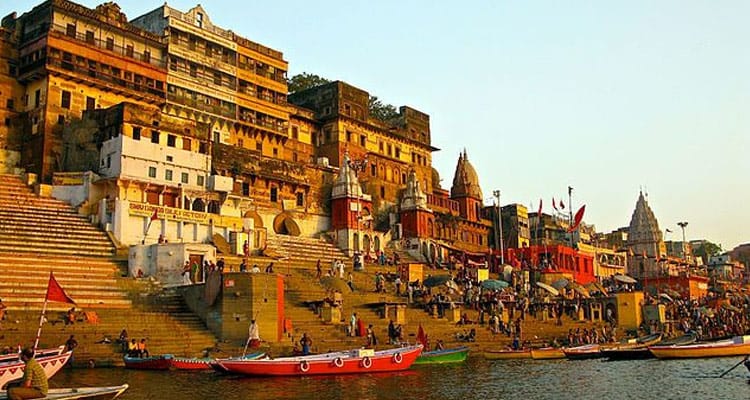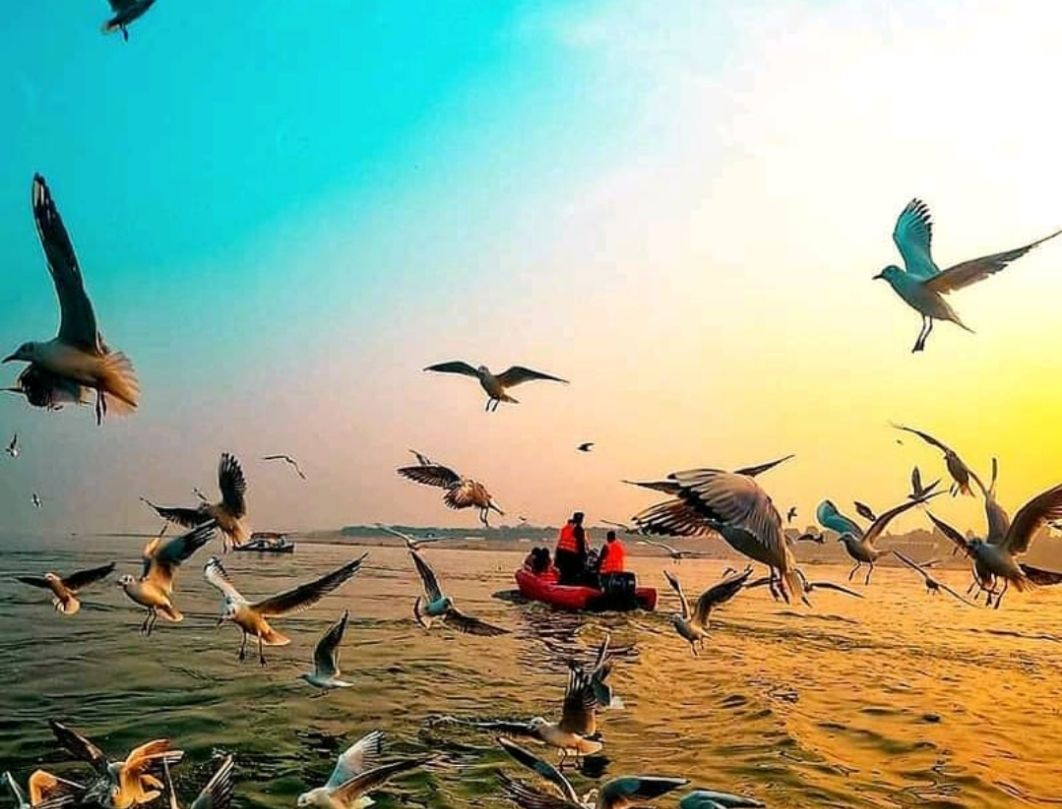Varanasi Travel Tips for First-Timers
Varanasi isn’t just a destination—it’s a vortex of spirituality, chaos, color, and emotion. For first-time travelers, it can feel like stepping into an ancient world where every alley whispers a story, every ghat holds a prayer, and every flame carries a soul toward moksha. But to fully experience this sacred city, a bit of planning and cultural awareness goes a long way.

In this ultimate travel guide for Varanasi first-timers, we’ve packed in practical tips, spiritual insights, and insider advice from the locals at Tripcosmos.co, your go-to Varanasi-based tour experts.
Varanasi Travel Tips for First-Timers
1. Introduction – Welcome to the Spiritual Capital of India
Why First-Time Visitors Fall in Love with Varanasi
For many, Varanasi is a culture shock. And yet, once you adjust to the sensory overload—the bustling ghats, the echo of temple bells, the fragrance of incense and burning pyres—you realize this place has a soul that speaks directly to yours.
Whether you’re here for spiritual awakening, cultural curiosity, or artistic inspiration, Varanasi offers something that no other city in the world can replicate.
What Makes Varanasi a Unique and Transformative Destination
- It’s the oldest continuously inhabited city in the world
- People come here to live, pray, die, and be reborn
- Spiritual rituals unfold openly on the streets and ghats
- The Ganga Aarti is one of the most powerful public rituals you’ll ever witness
Every traveler leaves with a different version of Varanasi in their heart—and a story worth telling.
2. Best Time to Visit Varanasi
Seasonal Guide: Weather, Festivals, and Ganga Rituals
Choosing the right season can transform your Varanasi experience:
- October to March: The most popular time with pleasant temperatures. Ideal for walking tours and boat rides
- April to June: Hot and dusty. Only travel during this time if you’re used to tropical heat
- July to September: Monsoon season. The ghats can be slippery, and flooding may occur—but the spiritual vibe is intense
Major festivals to align your visit with:
- Dev Deepawali (Nov) – Million lamps on the ghats. A photographer’s dream
- Mahashivratri (Feb/March) – Dedicated to Lord Shiva, with grand processions
- Ganga Dussehra (May/June) – Celebrates the descent of the Ganga to Earth
Tripcosmos.co offers seasonal travel packages to help you make the most of your trip, rain or shine.
Avoiding the Crowds Without Missing the Magic
If you’re crowd-averse:
- Attend the early morning Ganga Aarti at Assi Ghat instead of the evening one at Dashashwamedh
- Visit temples like Tulsi Manas and Sankat Mochan which are less crowded but spiritually rich
- Travel on weekdays instead of weekends for a quieter vibe
3. Getting to Varanasi and Moving Around the City
Airports, Trains, and Road Connections
Varanasi’s Lal Bahadur Shastri International Airport (VNS) connects to major Indian cities and even a few international destinations like Kathmandu and Bangkok.
- From the airport, it takes around 45–60 minutes to reach the ghats
- Prepaid taxis, app-based cabs, and Tripcosmos.co pickups are available
By train: Varanasi Junction (BSB) is one of the busiest railway stations and well-connected across India.
By road: Smooth highway links from Lucknow, Prayagraj, Bodhgaya, and Ayodhya make road trips a spiritual journey in themselves.
Local Transport Tips – Rickshaws, Walks, and Boats
- Use e-rickshaws or autos for short distances
- Walking is often the fastest way through the narrow alleys of the old city
- Hire boats for ghat-hopping or attending the Ganga Aarti from the river
- Tripcosmos.co provides English-speaking guides with heritage walks and ghat tours
Tip: Google Maps won’t always work in the winding alleys—trust your guide or ask friendly locals.
4. Where to Stay in Varanasi – Areas & Accommodations
Staying Near the Ghats vs. the City Center
For an immersive experience, stay near Dashashwamedh, Assi, or Munshi Ghat. You’ll be steps away from sunrise aartis, boat rides, and morning chants.
- Pros: Spiritual ambiance, photography opportunities, walking access
- Cons: Noisy, crowded, limited vehicle access
Prefer peace and modern comfort? Choose hotels near Cantonment area or Lanka, ideal for family travelers and those looking for convenience.
Tripcosmos.co partners with accommodations ranging from budget dharamshalas to boutique hotels and heritage homes.
Ashrams, Budget Hostels, and Boutique Hotels
- Ashrams like Parmarth and Jain Dharamshala offer basic but spiritual stays
- Backpacker hostels in Assi and Shivala areas are popular with international tourists
- Luxury hotels along the Ganga offer river views, yoga, and curated rituals
Advance booking is essential during festivals and winter season.
5. Varanasi Dos and Don’ts for First-Time Travelers
How to Behave at Ghats and Temples
- Do: Remove your shoes before entering temples and certain ghat areas
- Don’t: Point your feet toward idols or step over people’s heads during prayers
- Do: Offer donations respectfully in donation boxes, not directly to priests unless guided
- Don’t: Interrupt cremation rituals or click photos near Manikarnika Ghat
Respecting Local Culture and Rituals
- Dress modestly—covered shoulders and knees show respect
- Avoid public displays of affection
- If you don’t understand a ritual, observe silently or ask your guide
- When in doubt, follow what the locals do
Your awareness and humility will open more doors than a camera or a map ever can.
Continuing with the next valuable sections of the article…
6. Packing Essentials for Varanasi
What to Wear, What to Carry, and What to Leave Behind
Packing for Varanasi is all about comfort, respect, and practicality. You’ll be navigating dusty roads, temple stairs, boat rides, and spiritual spaces, so it’s best to pack light, breathable, and modest.
Essentials to pack:
- Cotton clothes – breathable and ideal for hot weather
- A scarf or shawl – for temple visits and sudden chills near the river
- Flip-flops or sandals – easy to remove at temples
- Reusable water bottle – stay hydrated (only drink filtered or bottled water)
- Power bank and flashlight – power cuts can happen in older parts of the city
- Hand sanitizer and tissues – for use in public toilets or while eating on the go
Leave behind: flashy jewelry, expensive gadgets, and anything you wouldn’t want to drop in the Ganges or lose in a crowd.
Tripcosmos.co provides customized packing checklists for travelers based on season and itinerary.
Travel Gear for Riverfronts and Old Alleys
The ancient lanes of Varanasi are narrow, winding, and sometimes slippery. Bring:
- A daypack to carry water, snacks, and camera
- Slip-resistant footwear – essential for morning dew or wet ghat steps
- Waterproof pouch or dry bag for boat rides
- Camera lens cloth or cover – the ghats are dusty!
A good walking stick or foldable stool helps older travelers enjoy the ghats in comfort.
Important Ghats for First-Timers
There are over 80 ghats in Varanasi, each with its own spiritual and cultural significance. Don’t get overwhelmed—start with the iconic ones:
- Dashashwamedh Ghat – Most famous, location of the evening Ganga Aarti
- Assi Ghat – Quieter, ideal for early morning rituals and yoga
- Manikarnika Ghat – Sacred cremation ground; powerful, emotional space
- Panchganga Ghat – Symbolic confluence of five rivers
- Scindia Ghat – Great for peaceful photography and views of submerged shrines
Tripcosmos.co offers ghat-hopping walking tours with mythological stories and spiritual insights.
When and How to Photograph Without Offending Anyone
Photography in Varanasi can be deeply rewarding—but it requires sensitivity and discretion.
Dos:
- Capture early morning mist, lamp-lit evenings, and colorful ghat life
- Ask for permission before photographing sadhus, rituals, or locals
- Use zoom lenses instead of getting too close during sensitive ceremonies
- Be respectful at cremation ghats—most prohibit photography
Don’ts:
- Never photograph bodies, pyres, or grieving families at Manikarnika or Harishchandra Ghat
- Avoid taking selfies during aarti or temple visits—it can come off as disrespectful
- Don’t block pathways with tripods or gear
Tripcosmos.co photography tours include access to hidden spots, ethical photo practices, and golden hour guides.
8. Eating in Varanasi – What’s Safe and What’s Sacred
Street Food You Must Try (and Avoid)
Varanasi is a food lover’s haven, but for first-timers, caution is key. The best flavors are often on the street—but so are the germs if you’re not careful.
Must-try eats:
- Kachori-sabzi with jalebi for a classic Varanasi breakfast
- Banarasi paan – iconic digestive, but take it mild if you’re new
- Tamatar chaat, chena dahi vada, thandai, lassi
- Baati-chokha, a rustic regional delight
Tips:
- Eat where locals eat and lines are long—a sign of freshness
- Skip raw foods or anything served lukewarm
- Carry your own spoon or use disposable eco-friendly cutlery when possible
- Only drink sealed bottled water
Tripcosmos.co offers food tours with vetted vendors, cultural context, and hygiene assurance.
Satvik Cuisine, Hygiene Tips, and Sacred Offerings
Most food near temples and ghats is Satvik—pure vegetarian with no onion or garlic, used in spiritual offerings.
- Try temple prasad like peda, laddoo, and kheer
- If invited to a local home or ashram meal, eat with your right hand, seated cross-legged
- Wash hands before and after meals—handwashing is a cultural ritual too
Tripcosmos.co includes meals at local Brahmin kitchens, community lunches, and spiritual dining experiences in its packages.
9. What to Expect at the Ganga Aarti Ceremony
Where to Sit, What to Do, and What to Avoid
The Ganga Aarti at Dashashwamedh Ghat is a spellbinding ritual performed by priests with fire lamps, conch shells, and Vedic chants.
Tips for first-timers:
- Arrive at least 45 minutes early for good seating
- Sit on the steps or book a boat seat facing the ghat
- Stand or sit quietly during the rituals—no flash, no shouting, no interrupting
- Join the locals in chanting or simply watch in silence
Avoid: pushing for selfies, blocking the view with tripods, or walking in front of the priests during the ceremony.
Booking a Boat for Aarti – Tips and Costs
A boat ride during aarti gives you a floating front-row seat to the spectacle.
- Costs: ₹100–₹300 per person in shared boats, ₹800–₹2000 for private options
- Sunset rides include brief commentary, aarti viewing, and floating diya rituals
- Negotiate beforehand or book in advance via Tripcosmos.co to avoid scams
Pro tip: Combine your aarti viewing with a sunset photography tour or guided mythology session.
10. Safety and Health Tips for Varanasi Travelers
Dealing with Crowds, Monkeys, and Local Scams
Safety tips:
- Be alert in crowds and markets—keep valuables secure
- Avoid isolated alleys after dark
- Beware of fake priests or guides asking for donations—always book through trusted sources like Tripcosmos.co
- Watch out for monkeys—especially near food and glasses
Staying Healthy – Water, Food, and Medication Advice
- Only drink bottled or filtered water
- Use ORS packets or electrolyte drinks to stay hydrated
- Carry basic first-aid and prescribed meds
- Wash fruits thoroughly or avoid them raw
Tripcosmos.co provides emergency contact support, doctor-on-call options, and curated travel insurance tie-ins for peace of mind.
Continuing with the final insightful sections of the article…
11. Language, Etiquette, and Local Interaction Tips
Basic Hindi Phrases and Local Greetings
While many locals in Varanasi speak some English, using a few Hindi phrases can go a long way in earning smiles and respect:
- Namaste (Hello)
- Dhanyavaad (Thank you)
- Kripya (Please)
- Kitne ka hai? (How much is it?)
- Mujhe madad chahiye (I need help)
When greeting older people or priests, a respectful “Pranam” with joined hands is considered very polite.
Tripcosmos.co guides are multilingual and can help you bridge any communication gap.
How to Approach Sadhus, Pandits, and Locals Respectfully
- Always ask permission before taking photos of sadhus or rituals
- Greet temple priests with a polite “Namaste” and don’t interrupt their prayers
- Don’t offer money unless they request a donation for a specific ritual or prasad
- If invited into a local home, remove your shoes and bring a small gift (sweets or incense are appreciated)
Locals in Varanasi are generally friendly, but they also expect respect for their space and traditions.
12. Money, Connectivity, and Local Shopping Tips
Currency Exchange, ATMs, and Internet Access
- Carry some cash, especially for small vendors, temples, and local eateries
- ATMs are widely available near Godowlia, Assi Ghat, and Lanka areas
- Most hotels and restaurants accept credit/debit cards, but not street vendors
- Wi-Fi is available in most hotels and cafés; mobile networks work well in city areas
- Buy a local SIM card if staying more than a few days (Tripcosmos.co can assist)
Pro tip: Always keep ₹10 and ₹20 notes handy for boat rides, prasad, or small purchases.
Where to Shop and What to Bargain For
Varanasi is famous for its handwoven silk sarees, Rudraksha malas, wooden toys, and brass puja items.
Top shopping areas:
- Godowlia Market – Local souvenirs, incense, idols
- Thatheri Bazaar – Metal crafts and spiritual items
- Lanka Market – Casual wear, books, and accessories
- Assi Ghat – Art, paintings, handmade journals
Shopping tips:
- Bargain politely—it’s expected!
- Ask your guide or hotel for genuine silk shops to avoid fakes
- Carry a cloth bag or tote—plastic bags are discouraged in many sacred areas
Tripcosmos.co offers curated shopping walks with verified artisans and ethical vendors.
13. Important Cultural Insights and Spiritual Awareness
Understanding Life, Death, and Moksha in Varanasi
Varanasi isn’t just about temples and rituals—it’s the city where people come to die consciously. Places like Manikarnika Ghat are sacred spaces where death is not feared, but celebrated as liberation.
- You’ll witness funeral processions, cremation pyres, and prayers for the departed
- Locals believe that dying in Kashi grants moksha, freeing the soul from rebirth
- Be respectful, even if the experience feels overwhelming
Rather than avoiding it, accept the cycle of life and death that unfolds in this sacred land—it’s part of the profound spiritual lesson Varanasi offers.
How to Participate in Ceremonies Without Intrusion
- Many rituals and pujas are public, but don’t interrupt or crowd participants
- Follow your guide’s lead during temple visits or ghats
- Join in lamp floating (diya) ceremonies or group chants with quiet respect
- Avoid touching ritual items unless invited
Tripcosmos.co ensures you have the cultural context and spiritual etiquette to participate meaningfully and mindfully.
14. Mistakes First-Time Travelers Make in Varanas
Common Blunders and How to Avoid Them
- Over-scheduling: Don’t try to cram 10 temples into one day. Varanasi flows on its own time.
- Not hydrating: The heat and humidity can exhaust you quickly—drink up, but wisely
- Disrespecting spaces: Accidentally photographing cremations or stepping inside temples with shoes
- Getting lost: The alleys are confusing—always carry your hotel card or use a guide
- Falling for scams: Avoid unauthorized boatmen, priests demanding cash, or souvenir overpricing
Choosing the Right Guides, Boats, and Vendors
- Book through Tripcosmos.co for vetted experiences with licensed guides, certified boatmen, and transparent pricing
- Always agree on a price before boarding a boat or buying goods
- Avoid unsolicited “helpers” at temples—they often overcharge for basic services
By planning mindfully, your first trip to Varanasi will be not just memorable—but transformational.
15. Conclusion – Embrace the Chaos, Discover the Calm
Varanasi will challenge you, enchant you, and ultimately change you. It’s not a place you just visit—it’s a place you feel in your bones and carry in your soul.
Whether you’re walking through its alleys, floating on the Ganges, or sitting in stillness at Assi Ghat, Varanasi teaches you to surrender—to time, to spirit, and to the present moment.
And for every first-timer who arrives unsure, you’ll likely leave saying, “I’ll be back.”
Let Tripcosmos.co guide your journey, ensuring your Varanasi experience is safe, soulful, and truly unforgettable.
FAQs
How many days are enough to explore Varanasi?
3 to 4 days gives you enough time to explore temples, ghats, ceremonies, and even a day trip to Sarnath.
Can I attend Ganga Aarti daily?
Yes, both Assi and Dashashwamedh Ghats host daily aartis, and each has its own unique charm.
What should I avoid doing on the ghats?
Avoid taking photos of cremations, being loud, littering, or bathing near ritual areas unless guided.
Is it okay to photograph rituals and cremations?
No. Always ask permission. Cremation sites are sacred and deeply personal—avoid cameras there completely.





